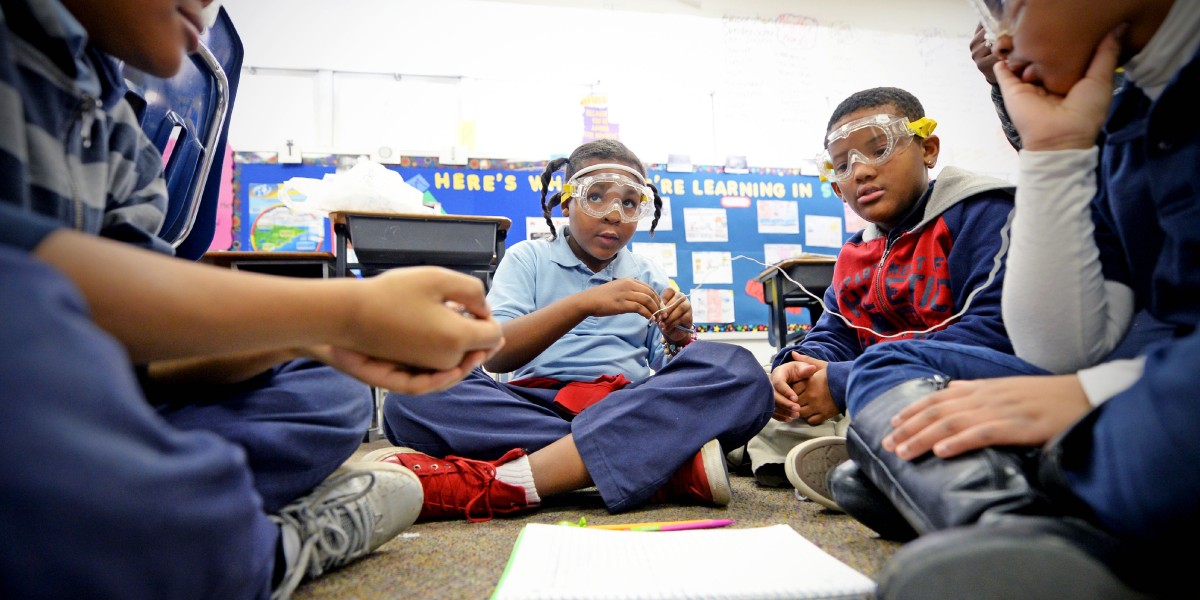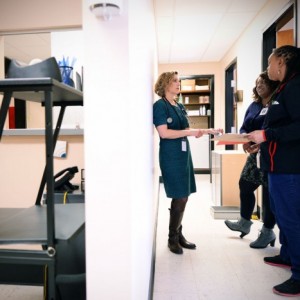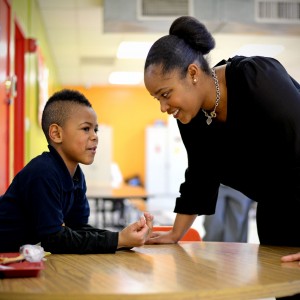This Jennings School District Superintendent Tiffany Anderson knows: Her students will never understand science if her teachers don’t. And yet, many elementary teachers are not trained to teach scientific concepts.
“In primary education, the emphasis is on math and reading, as it should be,” Anderson says. “But that means there can be a hesitancy to get too deep in science. We want to change that.”
Anderson, who will depart at the end of the school year to lead the Topeka School District, has led a remarkable turnaround at Jennings. Since her arrival in 2012, she has stabilized district finances, boosted attendance and introduced programs to serve district’s overwhelmingly low-income population. The district is now fully accredited for the first time in years.
Still, Jennings’ standardized test scores lag. Though Jennings outperforms neighboring districts with high levels of poverty, fewer than 20 percent of the district’s fifth-graders tested proficient in science. So Anderson enlisted the help of the Institute for School Partnership (ISP) at Washington University in St. Louis to bring its innovative MySci program to every Jennings K-5 classroom, 46 classes in all.
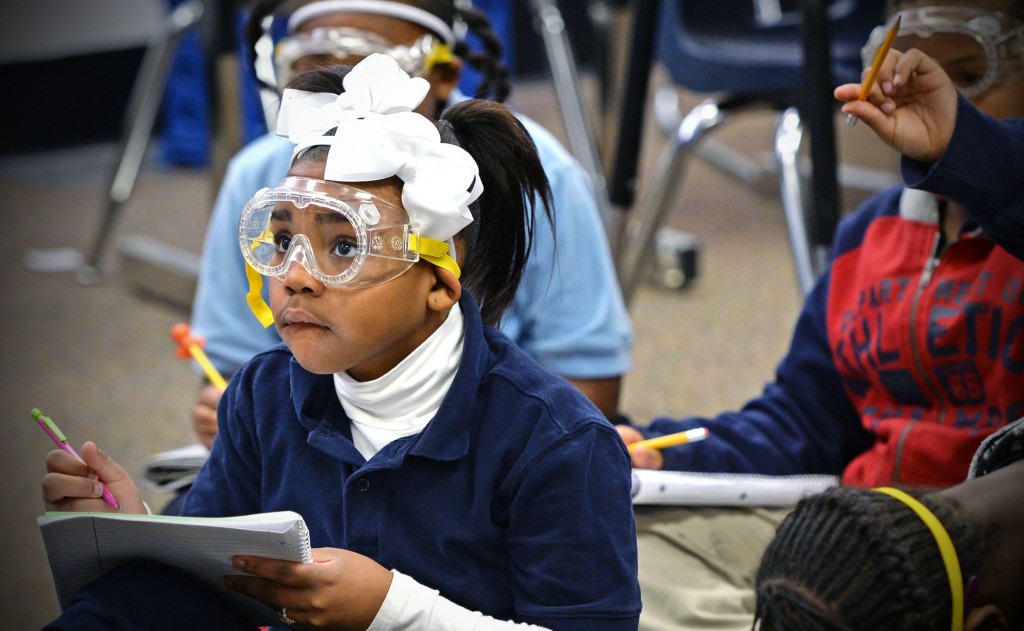
MySci, a cornerstone program of the ISP supported by the Monsanto Fund, provides K-8 teachers across the St. Louis region a comprehensive science curriculum and the materials to conduct hands-on experiments.
And yet Victoria May, ISP executive director, understands why teachers stick to the textbook. Experiments are messy, supplies get lost, small groups get rowdy. That’s why MySci works with teachers to develop and test every lesson to make sure it’s clear and achievable.
“Teacher feedback is key. Once they see how this will work in their classroom, they never go back to teaching with worksheets again.”
Vicky May
“Teacher feedback is key,” May says. “Once they see how this will work in their classroom, they never go back to teaching with worksheets again.”
The first step is intense teacher training at the MySci warehouse at 6601 Vernon Ave., in University City. Last year, some 750 teachers from across the region learned MySci lessons and curriculum.
“It’s not enough to inspire teachers, you have to prepare them,” May says. “We let them know it’s OK that they don’t know all of this. MySci gets their confidence so they feel great about teaching science.”
Johnniel Bowe is one of those educators. A communication arts instructor for most of her 24-year career, Bowe wanted a change — not just what she taught, but how she taught.
“But I wasn’t sure exactly how to go about it,” says Bowe, who teaches at Fairview Primary. “MySci helped me and it’s helping my students. The critical thinking, the collaborative work — the students are really challenged and engaged.”
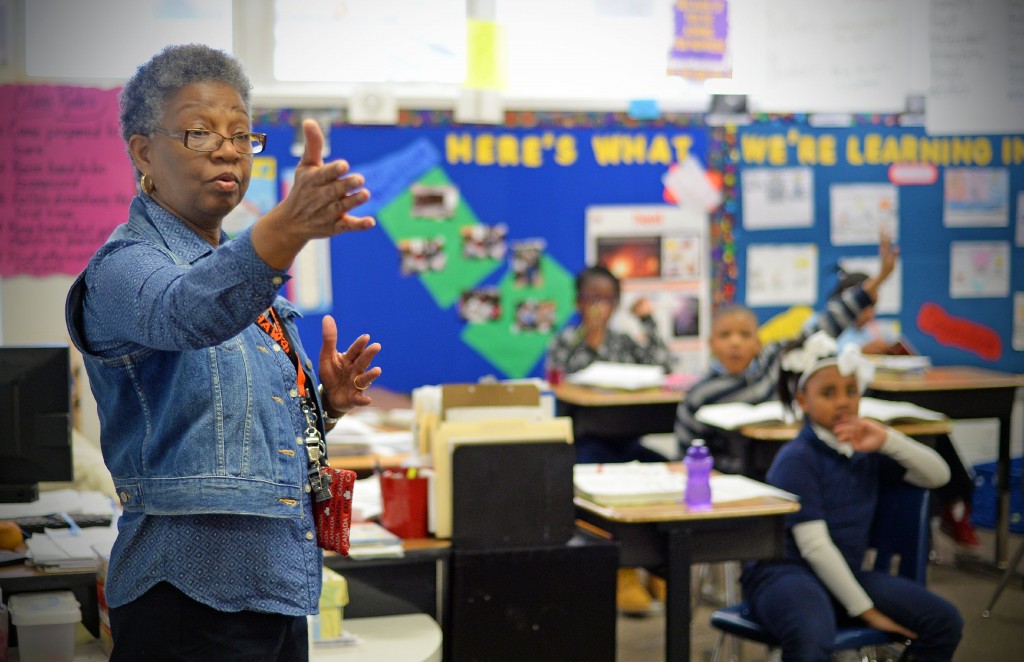
‘Doing work, causing change’
On this day, Bowe is wrapping up the energy unit. So far, her students have learned different types of energy, how humans use energy and what variables affect energy. A chorus of “ooh, ooh, oohs” fills the room when Bowe asks students to define energy.
“Energy is the ability to do work and cause change,” answers student Laskye Keen, who, one day, wants to go to the Moon.
“And what is a hypothesis?” Bowe asks.
“An educated guess,” Marquis Hardin says.
“OK then, let’s get to it,” Bowe replies.
Students break into small groups to build a simple series circuit with wires, a battery and a light bulb. Everything Bowe needs for the lesson, from books to batteries, is contained in a big, red box delivered from the MySci warehouse.
Laskye hooks one wire from the battery to the light and another from the light to the battery. The light bulb starts to glow.
“It’s working, it’s working!” Marquis exclaims.
But why? And how? And what happens if the circuit is arranged differently? Bowe continues to probe as the students record their results and sketch the experiment in their notebooks.
“I love doing experiments,” Marquis says after class. “It’s more fun than just sitting and being lazy.”
Meanwhile, Anderson likes what she sees in Bowe’s classroom.
“To see a teacher who has never taught science before take off like this shows the effectiveness of the program,” Anderson says. “When you know that you have high expectations and a tremendous amount of support, it really changes your comfort level. You are willing to take risks. And you know where to go when you need help.”
Seeing themselves as scientists
May says MySci experiments do more than teach kids basic science; they teach them to think.
“The ability to make a claim, evaluate evidence and explain your reasoning are skills students need in English and history class, not just science,” May says.
“Scientists know the importance of persistence and resilience. It’s so important to teach students … those habits of mind when they are young.”
Vicky May
Hands-on learning also fosters creativity and resiliency. A well-designed experiment, after all, is a tantalizing “what if” frequently followed by a vexing “what now.”
“Every engineer knows you never get it right the first time,” May says. “Scientists know the importance of persistence and resilience. It’s so important to teach students, especially those who are underrepresented in the sciences, those habits of mind when they are young. By middle school and high school, the gap becomes too wide.”
It is too soon to say whether MySci is impacting science scores. Bowe’s students take their first standardized science test in fifth grade. Internal testing shows that students are meeting the Next Generation Science Standards, which have been adopted across the country.
Sklyer Wiseman, ISP K-5 curriculum and instructional specialist, has used another measure of success at other schools.
“I’ve asked students at the beginning of the year to draw a picture of a scientist,” Wiseman says. “I end up getting a lot of pictures of white men in lab coats blowing things up.”
The photos at the end of the school year are markedly different. Now the scientists are boys and girls, black and white. They’re peering through magnifying glasses, digging fossils, building spaceships.
“It gives me chills,” Wiseman says. “They are able to see themselves as scientists.”
